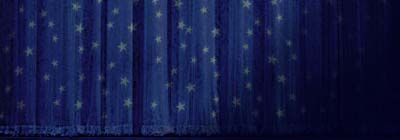Can the interpretation of a poetic work go beyond merely the black letters printed on a white page? Can the meaning of an etching or painting transcend only what is seen on the canvas or other medium? Artists, both literary and visual, in the Romantic Period, found a beneficial partnership in joining the two forms of expression. With the rising popularity of annuals during the Romantic Period, Felicia Hemans emerged as one of the female poets who found success in giving an etching a “voice.” Given this undeniable fact that the written art and the etched art should go hand-in-hand, the use of yet another popular form of art – the world of the web – seems best suited to present explications of two of Hemans’ poems, “Brigand Leader and His Wife” and “Evening Prayer.” The digital format will allow readers to navigate through the text and etchings as it explores the ways in which these art forms continued to define a woman’s place in society.
Many scholars of the Romantic Period define this period as the time when there is a shift in transcending the meaning of visual arts beyond what is simply seen in the art. One of the most prominent artists to partner the visual with the literary art is William Blake. He was able to intertwine his written work with engravings in such a way that examining either one as separate pieces of art would greatly take away from its meaning. As an artist he created several engravings to accompany the works of other poets. Felicia Hemans rose in prominence as one of the most famous female poets of the nineteenth century due in part to her numerous contributions to literary annuals. Several of her works were created from an engraving that was sent to her that needed to be given a story. Two in particular are those stated above. One can read the poems that are now more generally presented to students as black text on a white page and interpret them based only on the text. The same is true of the engravings. Given the engravings alone, a person can attach to the picture their own version of what they believe is happening with the subjects in focus. However, given both the poem and the engraving, the reading and viewing of the works are enhanced.
With this view in mind, the necessity and advantage of having both the written art form and the drawn art form presented in conjunction with each other becomes more important. These works were originally presented to their audiences in the framework of the literary annuals. Bringing a modern flair to the presentation of the works, the world of the internet seems to be best suited for an interactive visual display. The argument could have been presented by traditional means via essay format printed out and stapled together with the engraving attached. A traditional black text on white paper project would not offer an appreciation of the art forms as well as the visually stimulating pages of a website would. The purpose in creating a digital project for this topic would be to merely give people the opportunity to see the poem and engraving in a format that is different than the one many readers have become apathetic toward.
The background design of the digital project is one solid color of a blue tint with a picture of a show curtain at the top of the pages. The show curtain at the top left of the screen is symbolic of the “show” that is veiled behind it, paralleling the insights that are to be made when browsers see the text and engraving in the same medium. Felicia Hemans has written the script to the engravings and it is our responsibility as the readers to not only read/hear the words, but to examine the picture as well. The simplicity of the background will allow an easier view of the pictures and text, eliminating the possibility of distraction. The only graphics that have been included on the main pages are those particular to the text or those of the author. One page has examples of some of the paintings that were produced during the Romantic Period by various artists. Including a page of various paintings will give a broader scope of the different subjects artists were interested in representing.
The navigation of the project is as simple as clicking on links to be directed to the various pages. Just as the poetry of the annuals and the poetry that made Felicia Hemans popular, was simple, so is the exploration of the site. From each separate page, users will be able to click on one of the links found on the left hand side to be directed directly to another page instead of having to be directed back to the home page each time. The simplicity of the navigation is just like the simplicity found in turning the pages of a book.
Producing this digital project has demanded the use of both visual senses and written skills. Just as the engravers and poets of the nineteenth century worked together to produce works that depended on each other for greater interpretation, a digital project relies on the visual aspects and the written aspects in order to understand the overall picture. Up until a few years ago, the co-dependency of visual arts and literary arts seemed to have been forgotten. The wide use of the internet has brought the two art forms back together.
|

